Winter evenings are more beautiful out of your blankets, sitting somewhere in the outdoor space and feeling the thrilling chill. And patio heaters can be your perfect partners to supply enough warmth to balance the cold. But can patio heaters be used indoors also?
Contents
- 1 Is It Safe to Use a Patio Heater Inside the House?
- 2 Can You Use a Patio Heater Under a Covered Patio?
- 3 Differences Between Indoor and Outdoor Heaters
- 4 Risks of Using a Patio Heater Indoors
- 5 Important Safety Precautions If You Use a Patio Heater Indoors
- 6 Things You Must Consider Before Buying a Patio Heater
- 7 Conclusion
The answer to the question is, No, you should not use a Patio heater indoors. In fact, you must not use any gas-based heaters indoors for a longer time. Some gas heaters are there which you can use indoors but only for some time, and also when you are there. You cannot leave any gas-based heaters unattended indoors. Patio heaters use different fuels such as Propane, Butane, and Kerosene, etc. Moreover, the most popular patio heaters use Propane as their fuel.
Also, as the name “Patio” beautifully explains the patio heaters are mainly designed for the “patio” in your house. Patio means the courtyard of your house. Below is a perfect example of Patio. It is a place outdoors in your house where you can sit with family or guests.
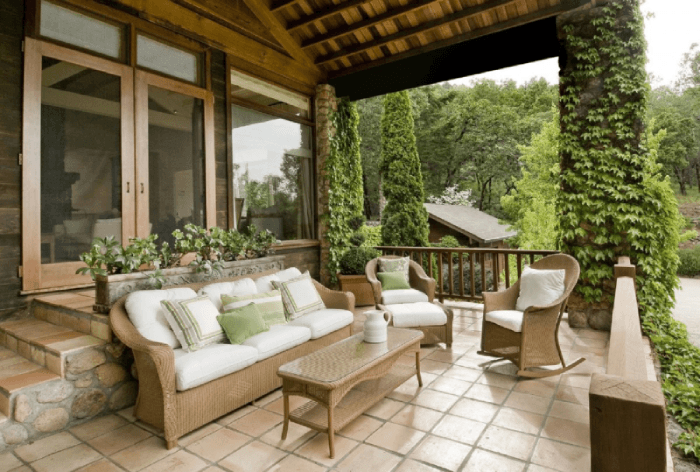
So, patio heaters are specifically designed for such areas, and thus, the name “Patio Heaters”.
You can easily find Kerosene Patio Heaters and Propane Patio Heaters in the market, and online. Moreover, there are also electric patio heaters which can be a bit safer for indoors.
Let’s dive deep into the topic, and know more details on this…
Is It Safe to Use a Patio Heater Inside the House?
Absolutely No! Patio heaters are designed and meant for outdoor spaces. They should not be used inside your home or any unventilated room. Patio heaters produce carbon monoxide which is very dangerous if inhaled consistently.
However, an electric patio heater indoors is a safe alternative available for you. Electric versions of patio heaters are safer provided you keep them away from combustible materials. Plus, such heaters shouldn’t be installed at higher altitudes, because the highly dense air with enough oxygen heats up faster. They work best at sea level. While running your electric heater make sure you follow all the guidelines and instructions listed in the user manual. This would ensure higher safety for you.
Can You Use a Patio Heater Under a Covered Patio?
Yes, you can use a Patio heater under a covered patio because even covered patios are well-ventilated because they are covered only from the top, and not from the sides. Different houses may have covered patios or fully open patios. These heaters go well with both types of patios.
Even if you have a question “Can you use a patio heater in a gazebo?”, the answer should be yes, because the gazebo is also well-ventilated from all sides. If you are unsure about what Gazebo is, check out the image below.
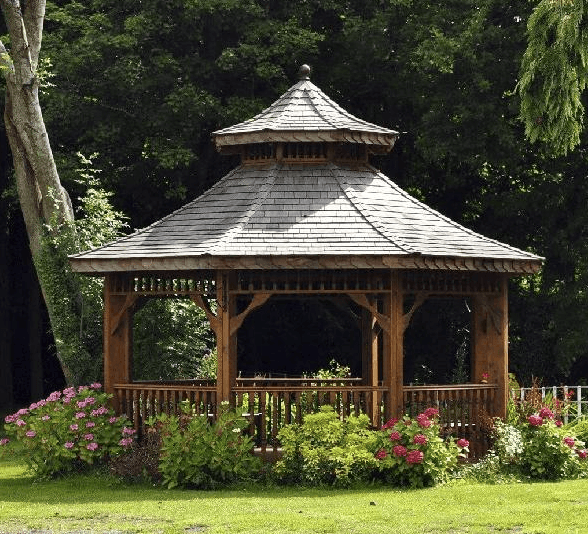
Since Patios or Gazebos are outdoor and well-ventilated, Patio heaters are pretty fine to use there.
Since ventilation is good, this won’t cause any harmful effect even if emitted in large quantities as the CO gas is replaced by fresh air quickly.
Differences Between Indoor and Outdoor Heaters
Patio heaters are designed primarily for outdoor use. They are built to withstand the elements, such as rain, wind, and moisture. This design is vastly different from indoor heaters, which are engineered to operate safely within the controlled environment of your home. Here are some key distinctions between indoor and outdoor heaters.
Let’s have the difference between Indoor Heaters and Outdoor Heaters
| Difference | Indoor Heaters | Outdoor Heaters |
|---|---|---|
| Location | Designed for indoor use in homes, offices, and commercial spaces. | Designed for outdoor use and exposed to the elements. |
| Fuel Source | Typically powered by electricity, gas, or oil, suitable for enclosed spaces. | Often powered by propane, natural gas, or wood, suitable for open-air environments and larger areas. |
| Portability | Some models may be portable, but most are stationary. | Many outdoor heaters are designed for mobility. |
| Safety Features | Focus on indoor safety features like tip-over protection and overheat protection. | May include weatherproofing, wind resistance, and ignition protection. |
| Design | Aesthetic designs that often blend with indoor decor. | Functional and durable design to withstand outdoor conditions. |
| Heat Distribution | Designed for even, controlled heat distribution within enclosed spaces. | May provide radiant heat or forced convection heating. |
| Temperature Control | Offer precise temperature control and thermostat settings. | Often equipped with basic controls for heat output and flame intensity. |
| Noise Level | Generally operate with lower noise levels. | May produce more noise due to outdoor conditions. |
| Installation | Easy plug-and-play installation in most cases, except gas models that may require professional installation. | May require professional installation, especially for gas-powered models. |
| Maintenance | Generally require relatively low maintenance. | May require more maintenance, especially for gas heaters. |
| Cost | Pricing varies depending on the type and features. | Pricing can vary widely depending on fuel source, size, and features. |
Risks of Using a Patio Heater Indoors
Is it Safe to Use a Patio Heater Inside the House? No, it is not safe. Patio heaters are primarily built for outdoors. Moreover, if you don’t use any gas based heaters indoors, it will be great. There are a lot of risk factors that you should consider before daring to use a patio heater indoors.
Carbon Monoxide
The most significant risk of using an outdoor heater indoors is the potential for carbon monoxide poisoning. CO is a toxic gas produced by incomplete combustion of fuel. When used indoors without proper ventilation, a patio heater can release dangerous levels of CO into your home, leading to severe health issues or even fatalities.
Fire Hazards
Patio heaters are often used with flammable fuels like propane. When brought indoors, the risk of fire hazards increases significantly. The close proximity of flammable materials and indoor furnishings can lead to accidents and fires.
Leaking of Gases
Fueled patio heaters can develop gas leaks over time. Using a patio heater powered by gas indoors can lead to gas leaks that pose serious risks to the people around.
Important Safety Precautions If You Use a Patio Heater Indoors
In the first place, you should avoid running patio heaters inside the house or other indoor spaces. But for some reason you are doing so, take these safety tips.
- Never use gas heaters indoors.
- Keep inflammable materials away from the heaters.
- Do not use heaters for long hours. Give a break after using an hour or two.
- Remember, an electric patio heater is best for enclosed spaces.
- While the heater is on, keep the doors and windows open.
- Do not modify the patio heaters for use indoors.
- Follow the manufacturer’s instructions.
Things You Must Consider Before Buying a Patio Heater
After the sun sets when the temperature drops, a patio heater can be a rewarding accessory to your outdoor space. However, before you rush to purchase one, there are several important factors to consider to ensure you make the right choice. Explore the below key factors you must consider before buying a patio heater.
Safety Features
Safety should be a top priority when choosing a patio heater. Look for heaters equipped with safety features like tip-over switches, overheat protection, and protective screens or guards. These features minimize the risk of accidents and ensure peace of mind when using the heater
Type of Patio Heater
Patio heaters come in various types, including propane, natural gas, and electric. Each has its own pros and cons. Propane and natural gas heaters offer mobility, but you’ll need to deal with fuel tanks or gas lines. Electric heaters are convenient but may require access to an electrical outlet. Choose the type that fits best your needs and preferences.
Level of Heat Output
Consider the heat output of the patio heater. This is measured in BTUs which are British Thermal Units. The higher the BTU rating, the more heat the heater can produce. Determine the size of the area you want to heat and choose a patio heater with sufficient BTUs to cover that space.
Design and Aesthetics
Your patio heater should complement your outdoor space’s aesthetics. They come in various designs, from sleek and modern to classic and ornate. Select a style that aligns with your outdoor decor and also your personal taste. Additionally, consider the material and finish of the heater to ensure it’s durable and resistant to the outdoor environment.
Portability and Storage
If you plan to move your patio heater around or store it during certain seasons, consider its portability and storage options. Some models come with wheels for easy mobility, while others can be disassembled for compact storage.
Ease of Use
Choose a user-friendly patio heater. This includes easy ignition mechanisms, temperature control, and maintenance. Read reviews and product descriptions to get an idea of how straightforward a particular model is to operate.
Energy Efficiency
Patio heaters are not only eco-friendly but are also cost-effective. Electric patio heaters are generally more energy and saving-efficient than those powered by gas. Always try to look for models with features such as adjustable heat settings or timers to control energy consumption.
Price
Patio heaters come in a wide price range. Set a budget before you start shopping and stick to it. Keep in mind that while budget-friendly options exist, investing a bit more in a high-quality, durable heater can save you money in the long run.
Check Local Regulations and Permits
Check with your local authorities to ensure you comply with any regulations or permits required for using certain types of patio heaters, especially if you plan to use gas-powered ones. Failure to do so could result in fines or other legal issues.
Conclusion
Buying a patio heater is a decision that should be made after careful consideration of various factors. You can make an informed choice that will enhance your outdoor space and keep you warm and comfortable during those chilly evenings.
Conclusively, it is not safe to use a patio heater designed for outdoor use indoors. There are various risks involved. If you need indoor heating, invest in a certified indoor heater designed for use in enclosed spaces. Prioritizing safety is crucial when it comes to keeping your home warm.

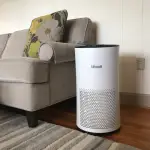
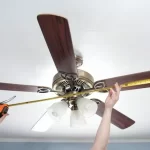




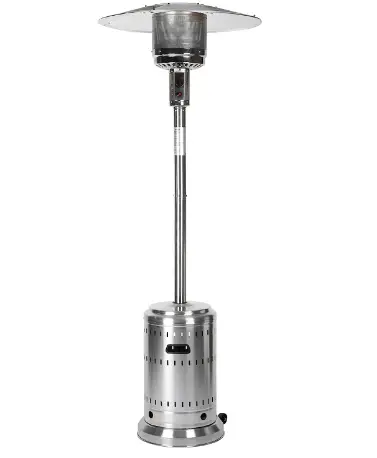
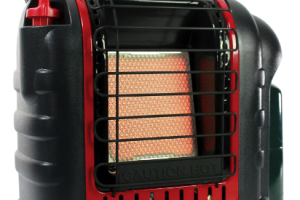
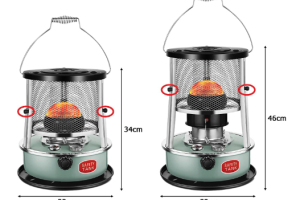
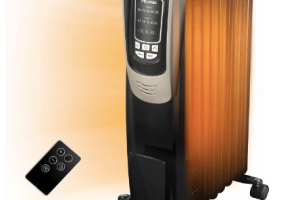
Add Comment